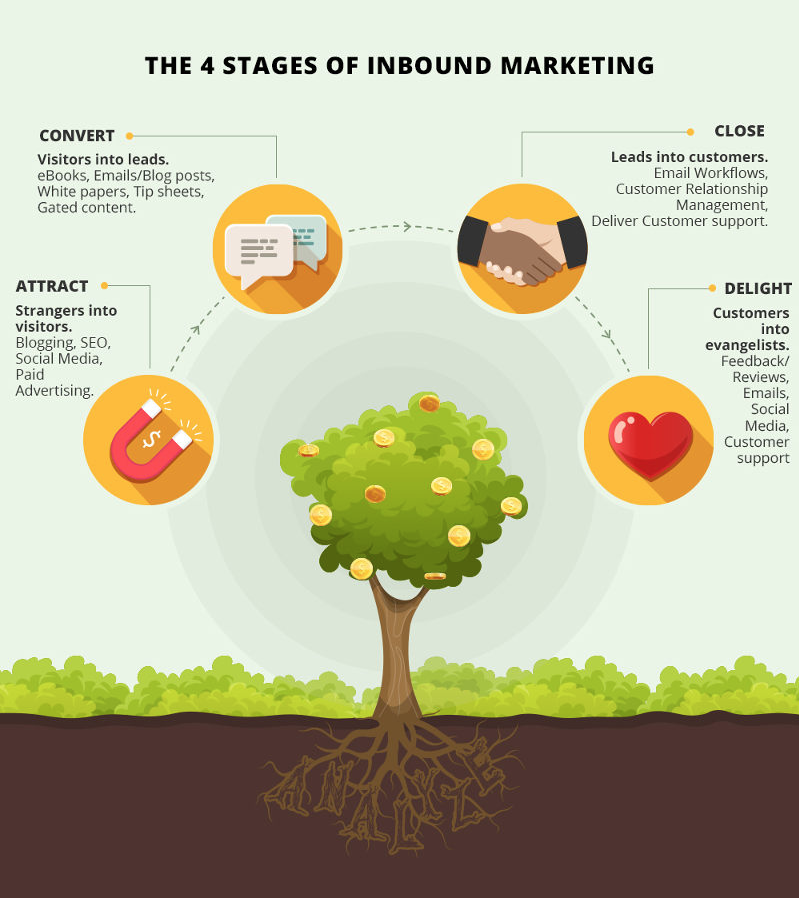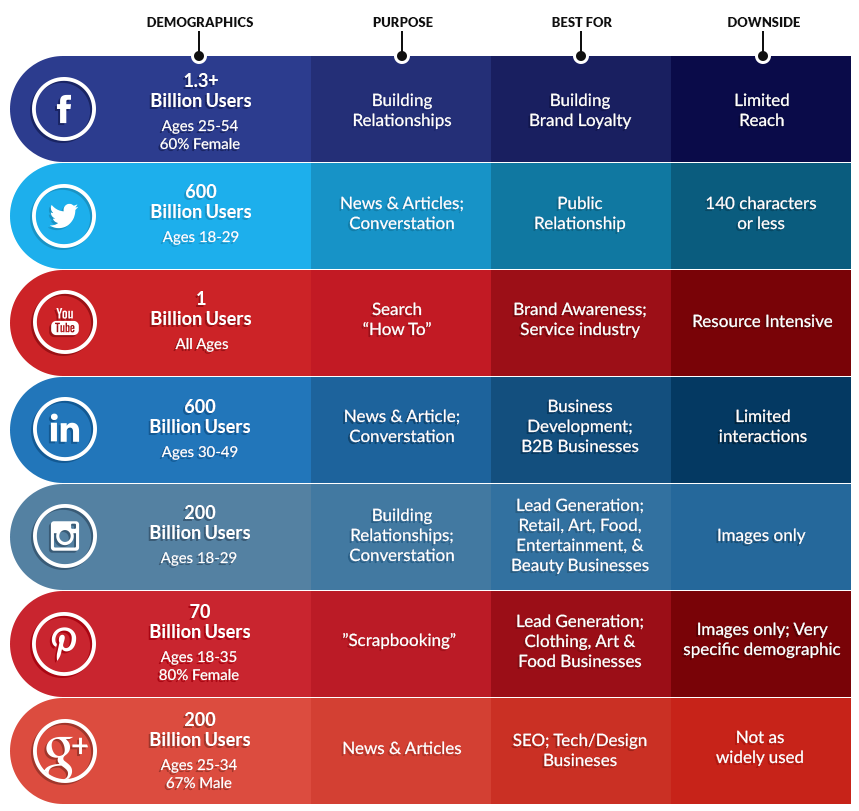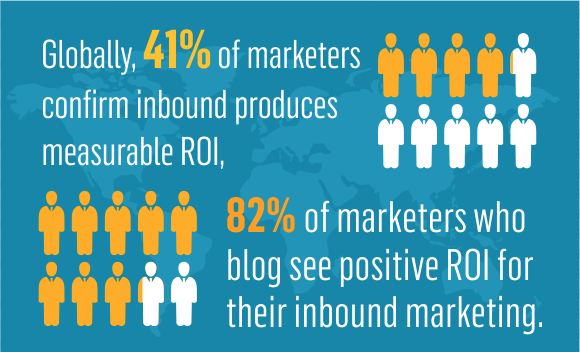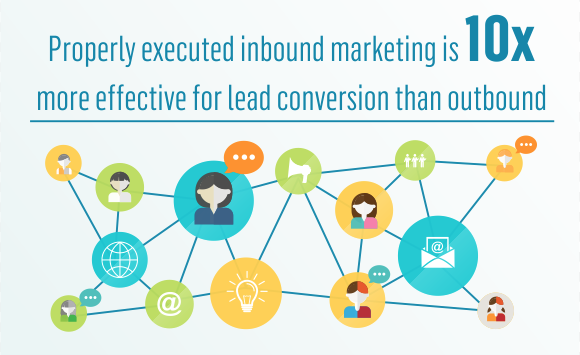The What, Why and ROI of Inbound Marketing
October 5, 2017 at 4:33 PM
In the past, the traditional and predominantly used method of marketing was outbound marketing. Outbound marketing includes many different techniques such as cold calling, email blasts, telemarketing, trade shows, traditional advertising, and more. The idea is to generate leads by sending out a message that will hopefully attract potential customers.
However outbound marketing has become less and less effective over the years because consumers have gotten smarter. They have caller ID to combat telemarketing, spam folders to avoid unwanted emails, DVR to fast forward through commercials, and internet to research products/services instead of having to attend trade shows. Therefore many marketers are moving away from traditional outbound marketing and transitioning to inbound marketing. So what is inbound marketing?
What is Inbound Marketing?
Instead of sending an outward message to masses of (sometimes uninterested) people, inbound marketing focuses on attracting and maintaining consumers that are already interested in your specific industry. At the beginning of the buyer's journey, the awareness stage, they are researching the challenges, questions, and opportunities in the industry they want to pursue. The idea of inbound marketing is to be there to attract the potential customer to your website using content that is most helpful to them.
But it doesn't stop there.
Using inbound marketing, your company should be able to offer content to the consumer throughout every stage (awareness, consideration, and decision) of their buyer's journey. Doing this you will attract, convert, close, and delight the consumer�taking them from a stranger to a customer, and (hopefully) to an evangelist of your brand.

Image by MarketingProfs
Here are the main types of, and approaches to, inbound marketing content that will attract new visitors to your website and brand.
Content Marketing
Inbound marketing, in general, relies on the concept of content marketing.
As Content Marketing Institute explains:
Content marketing is a strategic marketing approach focused on creating and distributing valuable, relevant, and consistent content to attract and retain a clearly defined audience�and, ultimately, to drive profitable customer action."
Regardless of the channel used, the goal is to have quality content that your potential customer finds interesting and helpful. Here are some different types of content marketing:
- Ebooks
- Whitepapers
- Videos
- Infographics
- Slide deck
Social Media
If it isn't already, your company should really be utilizing social media. Not only does social media allow you to directly interact with your customers, but it is also used to promote your content. Creating quality content is obviously very important, but there's no point if you don't attract visitors to that content. Social media helps build a following by attracting new visitors and alerting old visitors when you have interesting content to share (which should be everyday)!
There are many social media tools that will help you create, schedule, and monitor your posts on the following channels:
- YouTube
- Google+

Image by The-Pixel.com
Blogging
This is your company's chance to become a thought leader in its specific industry. Gain the trust of potential customers by making your blog the place they go for best practices and answers to any questions they might have. This is also your chance to show off your company's unique personality through your tone and writing style.
Blogging is one of the most important types of inbound marketing. It is said to be 3x more effective at generating leads than traditional marketing. It can seem intimidating at first, but we promise it isn't as hard as it seems (and even compiled tips on how to write a blog post).
SEO
Search Engine Optimization (SEO) plays a very important role in attracting visitors through organic search by optimizing the chance someone will find your company's content (regardless of the channel) through a search engine such as Google or Bing. SEO success today is not necessarily measured in keyword rankings. Instead, it's imporant to focus on the measurements that are most important to your specific company. An effective SEO strategy includes:
- Doing keyword research�find out what words your potential customers are using
- Creating content around keywords�website landing pages, social media posts, blog posts, etc.
- Optimizing content around primary keyword�add keyword to title, headers, body, and image descriptions
- Promoting your content�draw visitors back to your website by promoting content through social media
- Earning links to your content�link to other sources and they will help share your content
For example: make sure to check for SEO before posting a blog. Using long-tail keywords (multiple times throughout your blog) that you think your potential customers would use will allow them to find your content during their search. And including internal and external links will further help to optimize the blog's organic search results.

Image by HubSpot
Email Marketing
One type of inbound content that can be applied to all stages of inbound marketing, sometimes even to attract new visitors and prospects, is email marketing. Many people still think of traditional email as outbound marketing. This is true with respect to sending email blasts to large amounts of uninterested people (including purchased lists). But using email for inbound marketing is a different story.
Email marketing is used to follow-up with potential leads and subscribers that have already given you their email address by providing them with relevant content. This personalized content should help guide them back to your website.
For example, you could email a potential customer helpful guides or customer testimonials that might help their decision-making process. Or you could send existing customers discounts or coupons encouraging them to repeat purchases.
Email newsletters can also be an easy way to engage prospects with your content, and providing access to your newsletter archive can help seal the deal for new visitors by demonstrating to them that your content is informative and interesting. The best newsletters get forwarded to friends and colleagues, expanding your reach.
These are some helpful email marketing tips to remember:
- Know your audience
- Segment your contacts
- Send the right email at the right time
- Nurture the lead into a customer
- Delight your customers
Return on Investment
So why should you care about inbound marketing?
Because it is more efficient, cost effective, and will ultimately provide a better return on investment for your business. Not convinced that inbound marketing is more effective than traditional outbound marketing?

Image by Invesp
Here are some pretty convincing statistics on the effectiveness of inbound marketing:
- Inbound leads costs 61% less (on average) than outbound leads
- Inbound practices produce 54% more leads than outband practices
- 41% of marketers confirm inbound produces measurable ROI
- 82% of marketers who blog see positive ROI
- 79% of companies with a blog report a positive ROI for inbound marketing
- 80% of business decision makers prefer to get info in a series of articles versus an ad
- Content marketing costs 62% less than traditional marketing and triples the leads
- Inbound marketers double the average site conversation rate, from 6% to 12%
- Properly executed inbound marketing is 10x more effective for lead conversion outbound marketing

Image by Invesp
For more stats on inbound marketing and how marketers are using it across the world, download the State of Inbound 2017 Report from HubSpot.
Comments
Questions or comments? Join the conversation!